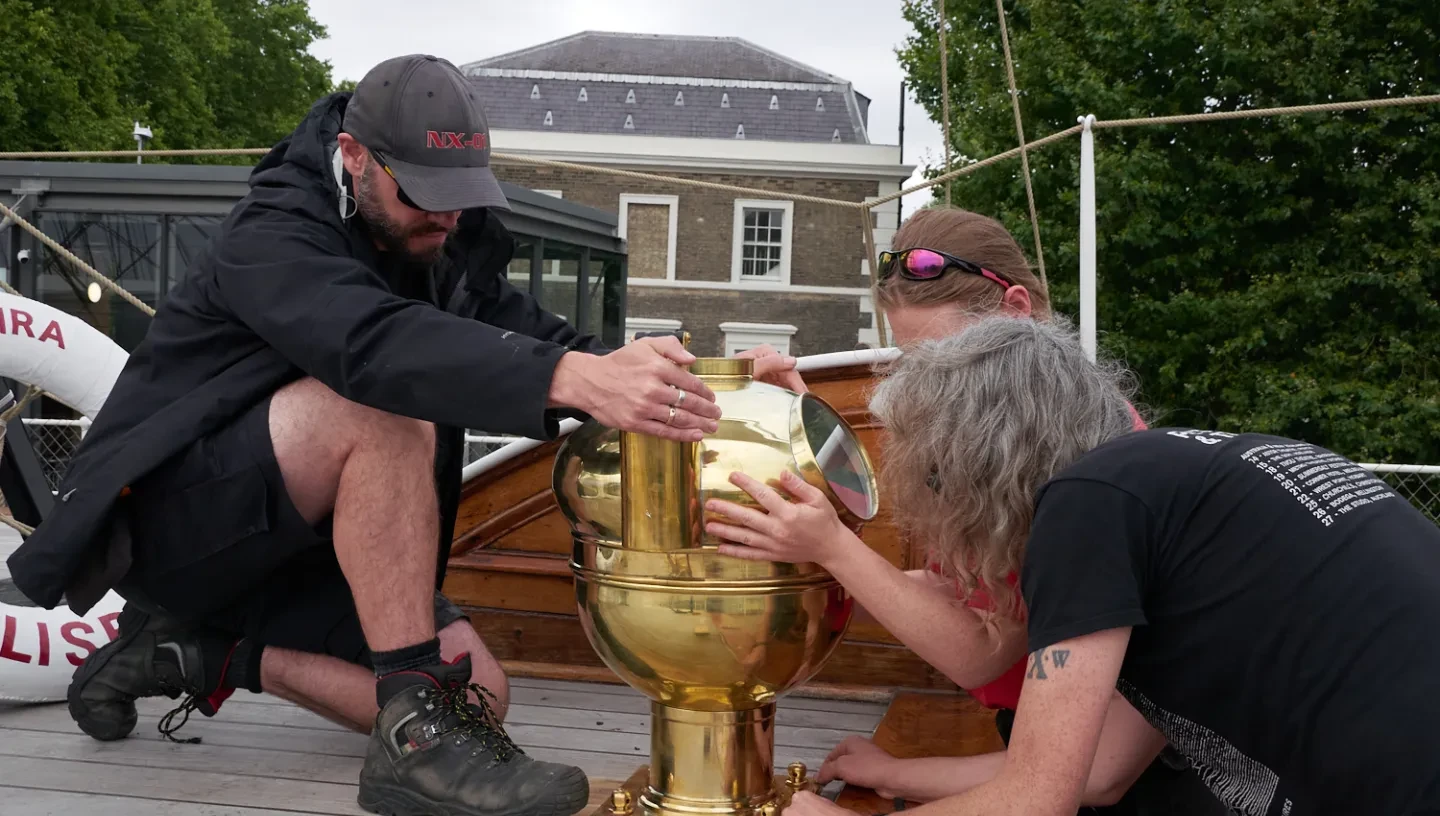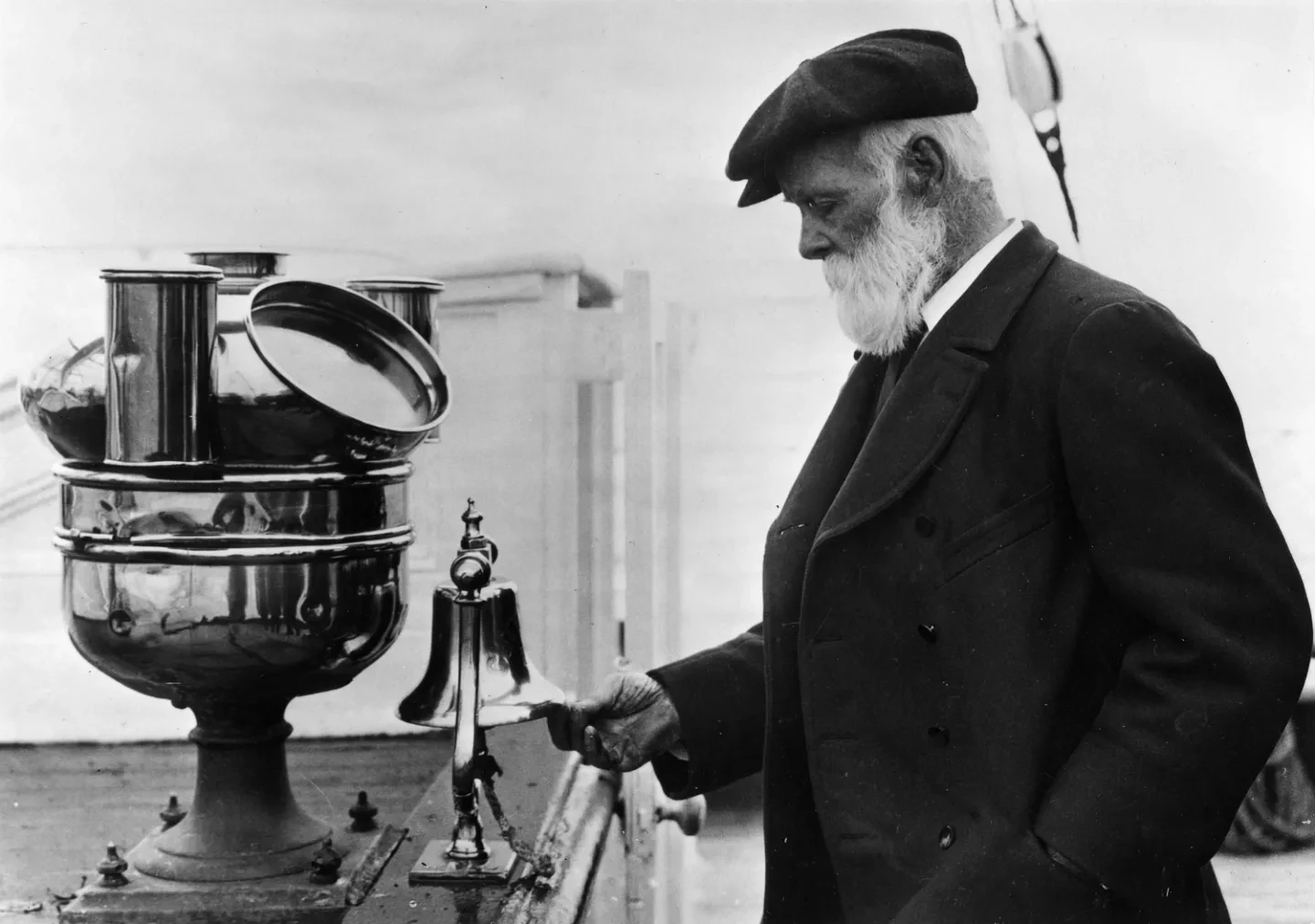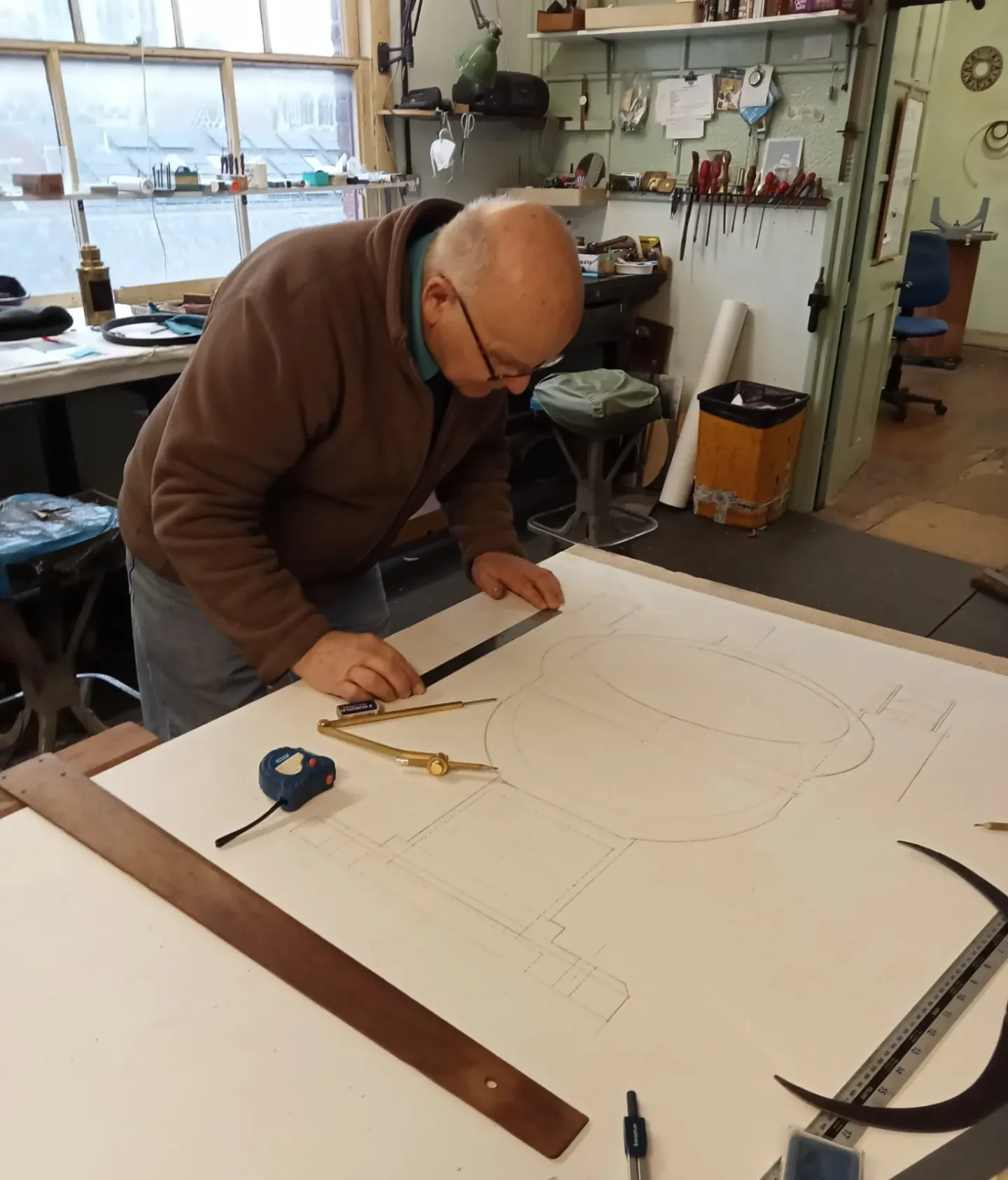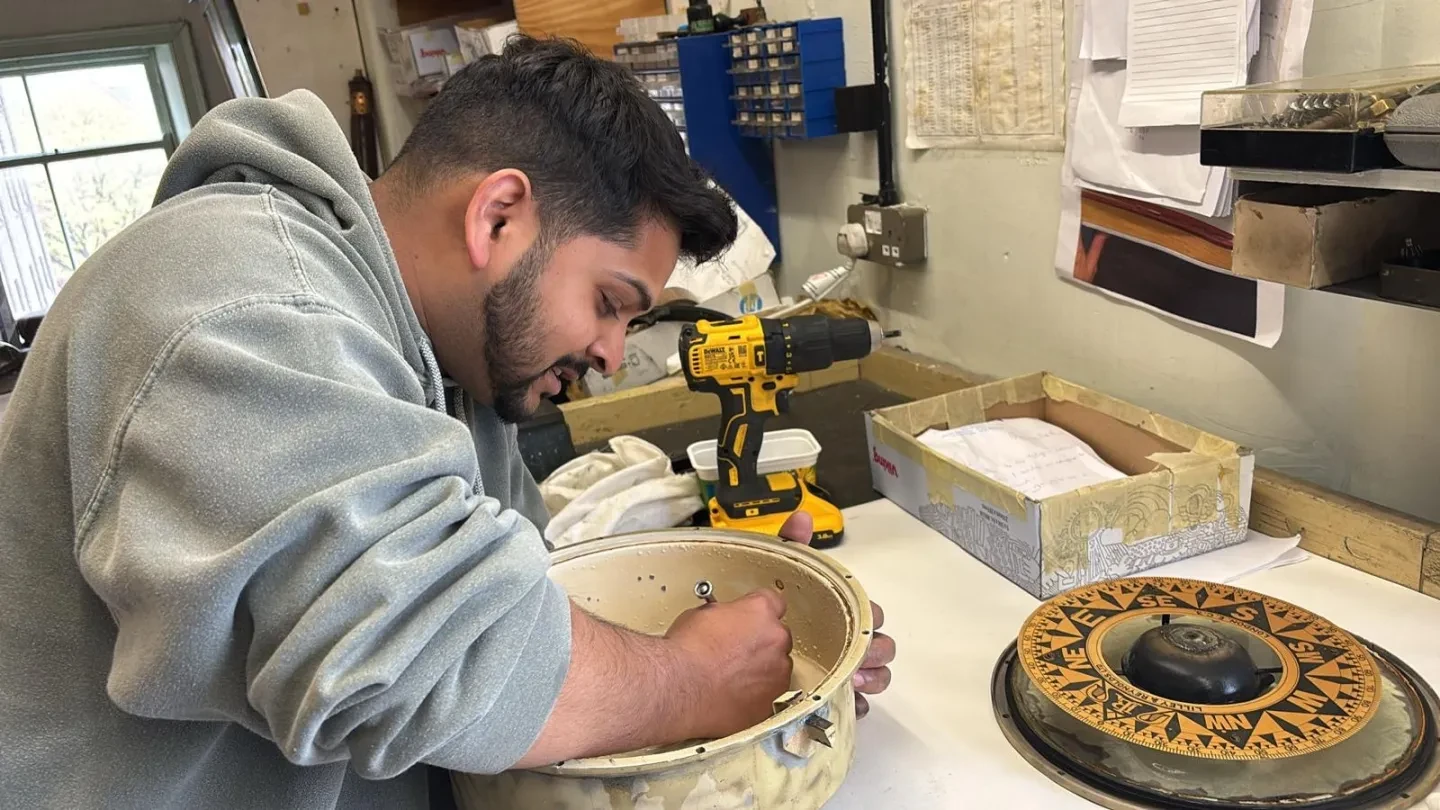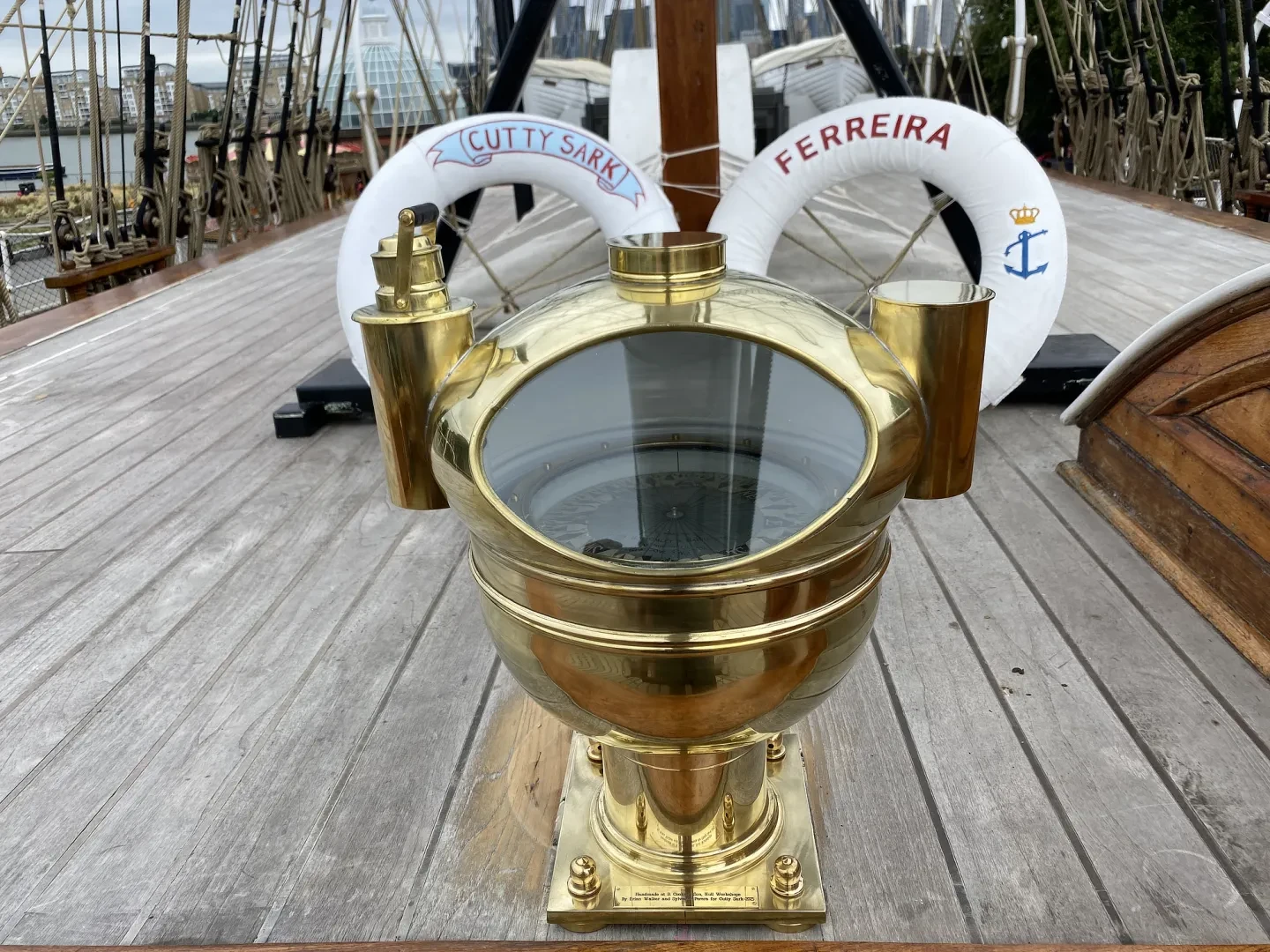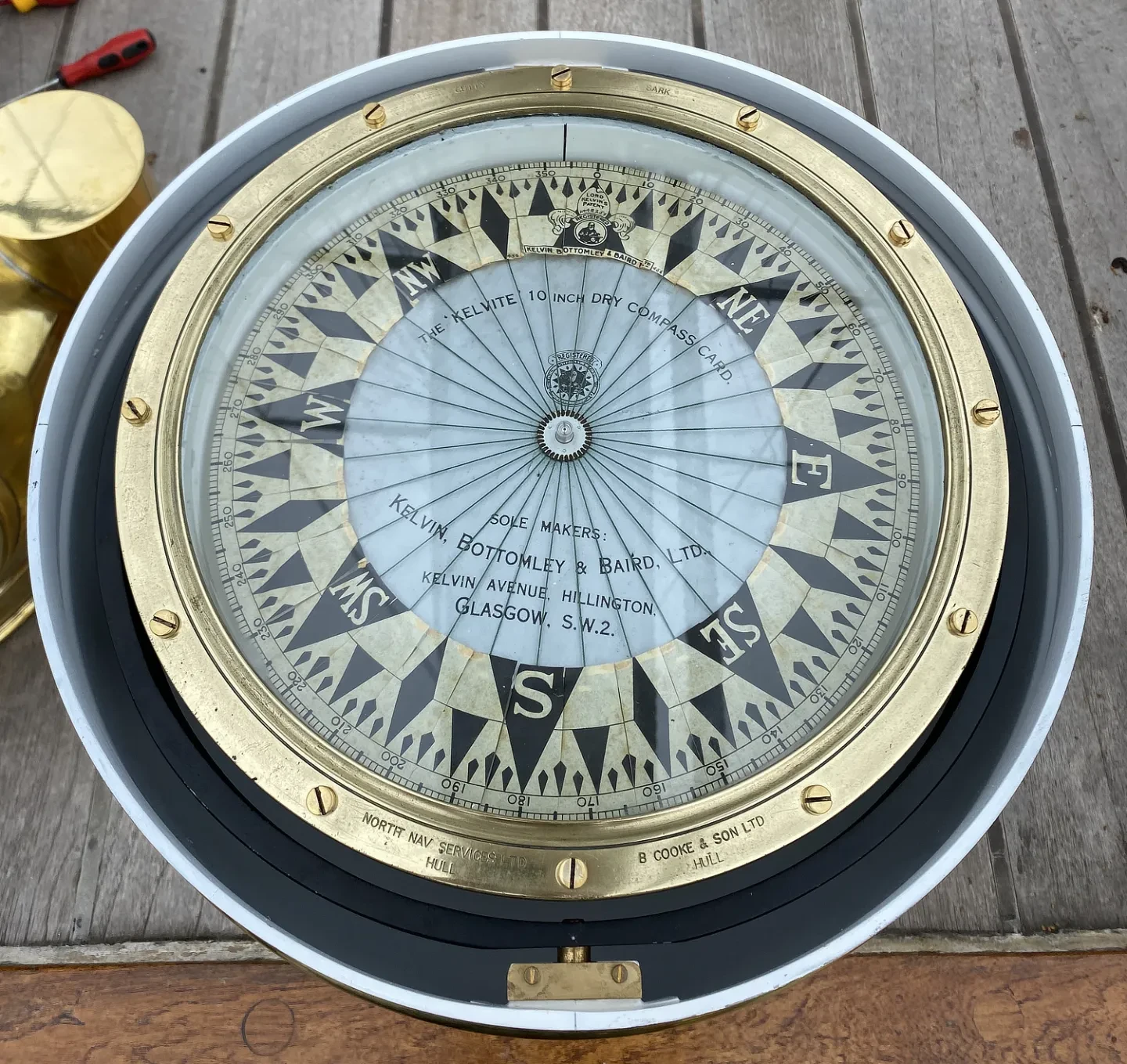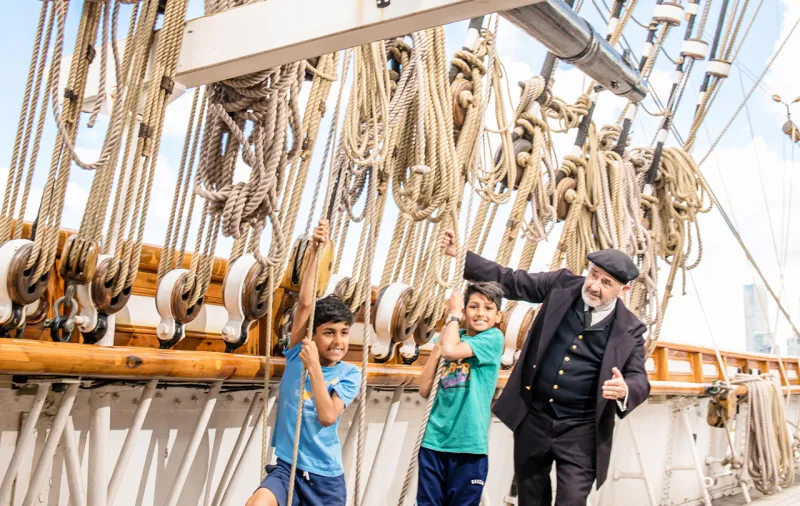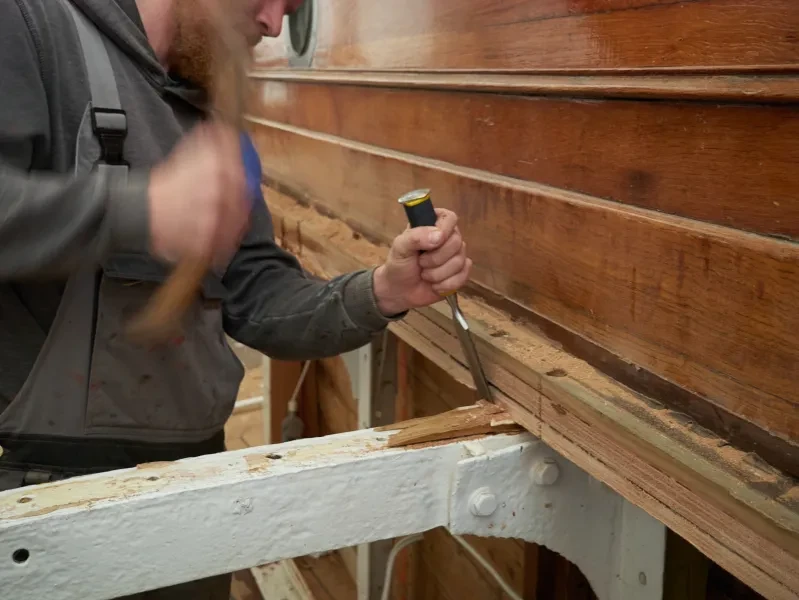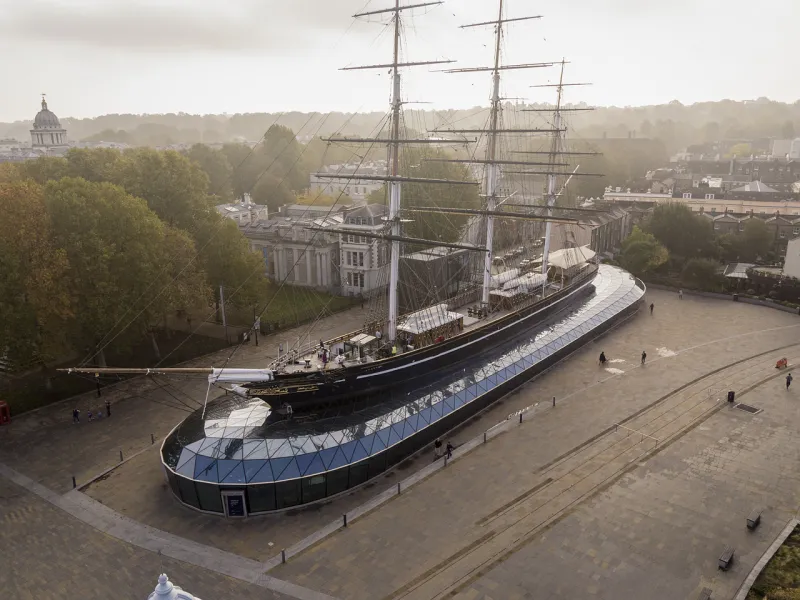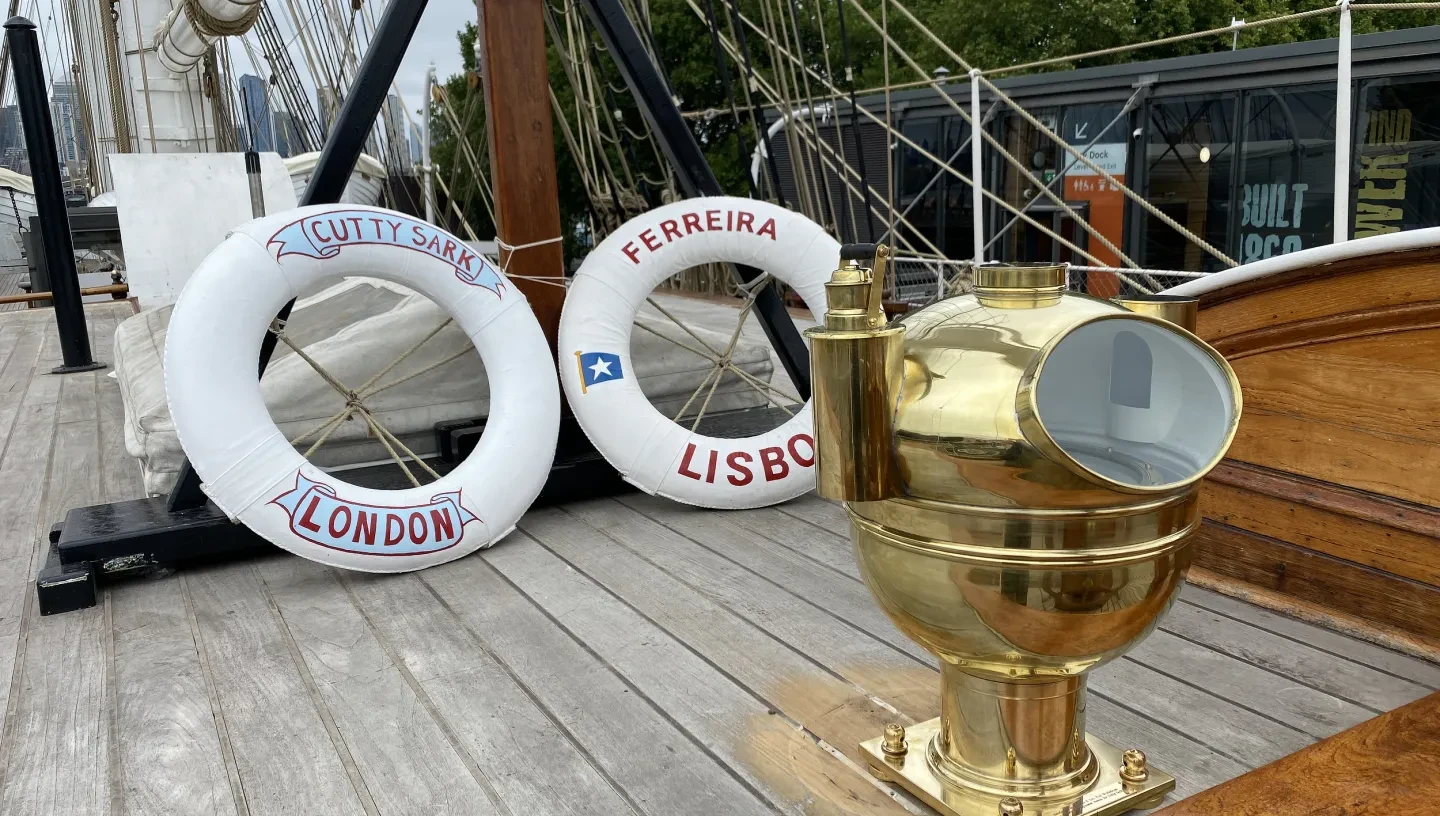
Located just in front of the ship’s wheel, a brass instrument sits atop the Liverpool House on Cutty Sark. This is a binnacle, a protective case that houses the ship’s compass.
The new binnacle is the work of B. Cooke & Son, nautical instrument makers in Hull. It is based on what was believed to be Cutty Sark’s original binnacle from 1869 and brings together traditional craftsmanship and historical research.
But the journey to making this instrument has not always been smooth sailing. From unexpected research avenues to the making process, discover how the binnacle came to be.
Winds of change: why did Cutty Sark’s binnacle need replacing?
Cutty Sark’s Research Advisor, Claire Denham, had long wondered about the story of the ship’s original binnacle.
The previous binnacle on board was of unknown date and had no connection with Cutty Sark, having been in position since the 1970s. It had been showing signs of wear and tear, so a decision was made to replace it with a new instrument, which would have a similar design to the original binnacle.
To inform the look of the new instrument, Claire and shipkeeping volunteer Graeme Tipp turned to archival materials. However, another question loomed large: if the previous binnacle had been on board since the 1970s, what happened to the original instrument?
To answer this, Claire and Graeme started to delve into the story of the 19th century instrument. Soon, some interesting discoveries came to light.
Researching the binnacle's history
Claire and Graeme are no strangers to the complexities of historical research. They’ve advised on the design and colour for the Star of India – the gilded centrepiece on the stern of the ship: a task all the more challenging as the only photographs available were in black and white. Claire’s archival research also informed the design of Nannie, Cutty Sark’s figurehead, which was installed in 2021.
The binnacle was their next project. The pair began by assessing the archival materials available. The binnacle was first mentioned in Lloyd’s Register of Shipping’s original specification report for Cutty Sark, which listed recommendations for the construction of the ship and the materials to be used.
Claire and Graeme extended their search: consulting documents from William Denny & Brothers of Dumbarton – the shipbuilders that completed Cutty Sark – to see if there were references to the makers of the ship’s navigational instruments. They tracked down the navigational instrument makers based in and around Dumbarton and Glasgow at the time of the ship’s construction; however, it became clear that the information available was limited. “We scoured the archives and came across bits and pieces, but these weren’t enough,” Claire explains. “We couldn’t find any documents about who made the binnacle.”
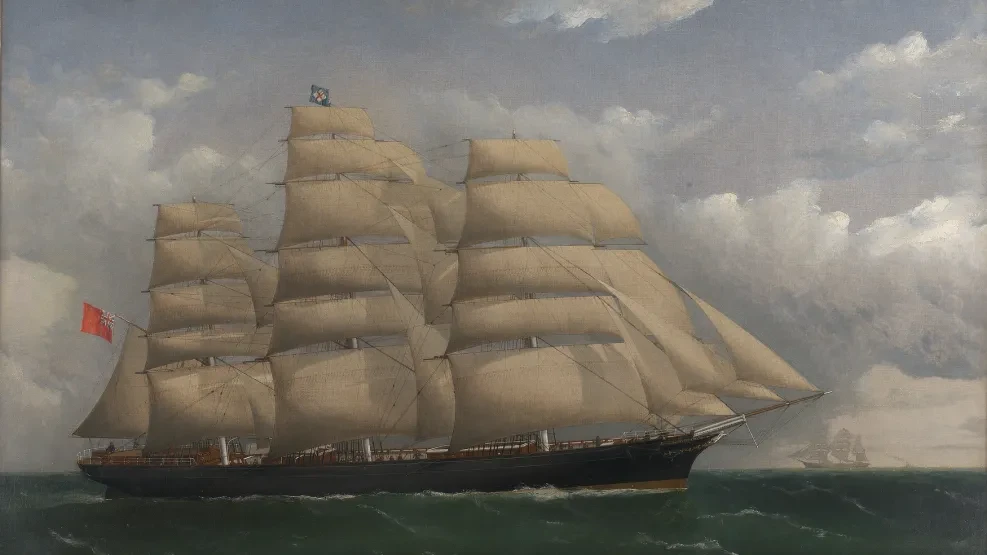
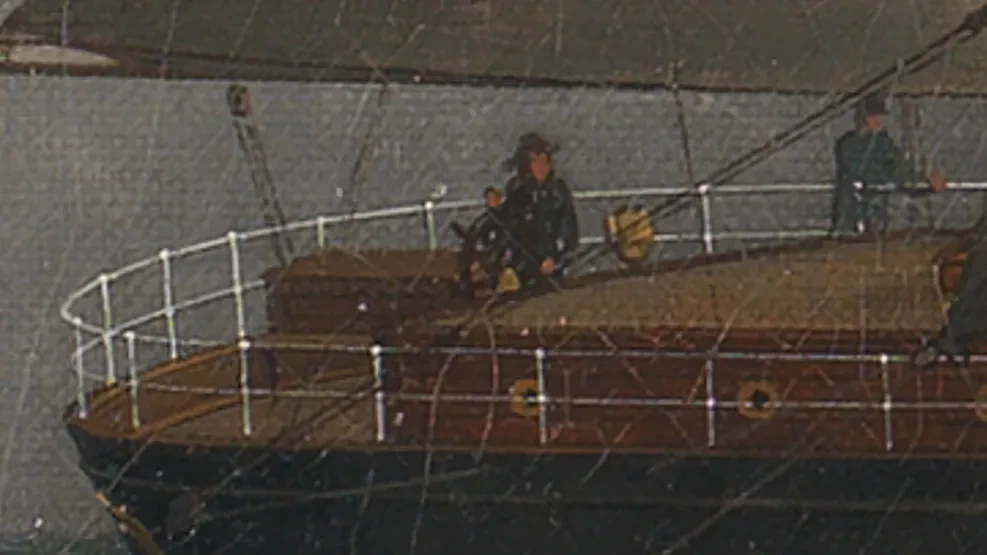
The pair then turned to another source: historical paintings and photographs. A painting of Cutty Sark by Frederick Tudgay in 1872 (pictured above) provided the earliest depiction of the binnacle. “It’s the best image we have of the ship from her early tea clipper days,” Claire says. The binnacle is later seen in a 1924 photograph of the ship’s very own Captain Woodget.
The last image of the original binnacle appears in a photograph from 1968. “We don’t know what happened to it after this,” Claire says, “Was it stolen, damaged or destroyed?”
Deciding on a design
The new binnacle takes inspiration from the 150-year-old Tudgay painting. As with all major projects on Cutty Sark, the instrument’s design needed to be in keeping with the ship’s history. “We have conservation policies we have to follow,” Claire says. “The work must respect the historic integrity of the ship.”
But finalising the design raised another question: how tall was the original binnacle? Luckily, one of the photographs provided a vital clue. “The saviour was the 1924 picture of Captain Woodget inspecting the binnacle next to the poop deck bell, which we still have,” Graeme explains. “By taking the dimensions of the bell, we were able to get the sizes we wanted for the new binnacle.”
He adds that while the new binnacle is not an exact replica of the original design, the team have carefully recorded the reasons behind their decision-making. “We’ve explained why’ve made the decisions we have, and if we find better evidence that brings to light new insights – we can update our decisions,” Graeme says. “All these things are ongoing stories.”
Keeping traditional crafts alive
The project has not only encouraged ongoing stories into the ship’s history, it’s also supported the continuation of traditional skills.
The craft of scientific and optical instrument making (a category that encompasses binnacle making) is classified as ‘Critically Endangered’ by Heritage Crafts, an advocacy body that assesses the viability of specialist crafts across the UK. Today, there are just a handful of individuals practising this craft, including makers at B. Cooke & Son in Hull.
Established more than 150 years ago, the company makes instruments from compasses and clocks to barometers and binnacles and carries out repairs and refurbishments. The Cutty Sark binnacle has been one of their more complex commissions; however, as Managing Director Priyanka Perera says: “We’re really glad we took this project, especially because of its historical importance to our country’s maritime heritage.”
The binnacle making process is intensive, but for Brian Walker, it’s all in a day’s work. Brian began working at B. Cooke & Son in 1968 at the age of 15. “I started off sweeping the floors,” he says. His carefully honed knowledge has been indispensable to this project. He explains that one of the first tasks involved creating scale drawings of the binnacle from the historic paintings and photographs.
Other steps included making a pattern for the brass to be poured in, spinning the metal – a challenge due to the binnacle’s elliptical frame – turning parts of the binnacle on the lathe, and buffing it. “It was a lot of detailed work,” explains Sylvester Perera.
Sylvester’s journey with B. Cooke & Son began in 2018 when he joined as an apprentice. He’s been involved in all aspects of the company, learning and developing his skills under the guidance of expert crafters.
However, this wasn’t a career he had initially considered. “I originally studied computer science, but I prefer work where I get to use my hands,” he says. “It’s very rewarding and satisfying. There’s always something new.” Sylvester is now a UK Maritime and Coastguard Agency certified Magnetic Compass Adjuster. He’s also established his own company: North Navigational Services Ltd, working in association with B. Cooke & Son to keep the knowledge – and legacy – of maritime skills alive.
For Cutty Sark's conservation team, utilising – and championing – these traditional shipkeeping skills has been central to the project. “Cutty Sark is a hub for shipkeeping skills, and we should be promoting these endangered maritime crafts,” Claire says. “As a maritime museum of international standing, we need to support and make people aware of these smaller organisations, which were so fundamental to the development of maritime technologies in this country.”
Bringing the past into the future
Now on display on the poop deck, the binnacle helps to bring the story of Cutty Sark’s seafaring days to life.
Exterior lamps and a glass window, which reveals a compass inside, highlight to visitors how the binnacle would have been used on board. “The binnacle’s purpose is to protect the compass from the weather, while still making it visible for the helmsman to see it, both day and night,” Graeme says.
This magnetic compass was sourced, restored and installed by B. Cooke & Son, to be in keeping with the navigational instruments from Cutty Sark’s seafaring days. It consists of an original rice paper compass card comprised of needle magnets, which drive the directional system.
For Cutty Sark’s conservation team, the educational aspect of the binnacle’s story is crucial. “We want to make sure its story is told and continue to pass on and develop the information we have,” Claire says.
By investing in these traditional skills, the team are keen to ensure the binnacle will be enjoyed by future generations. “We're just custodians passing through,” she adds. “The binnacle is something that’s hopefully going to outlive all of us and be on the ship for decades.”
